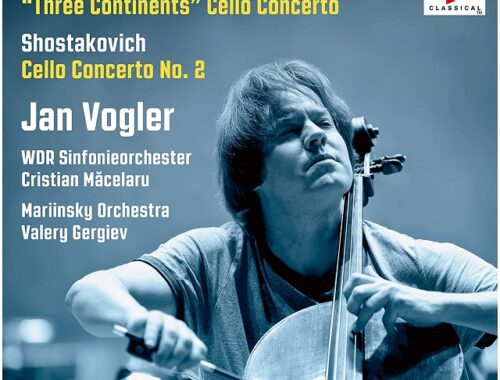Prom 51, City of Birmingham Symphony Orchestra, Nelsons – Review ****
Shostakovich’s 7th Symphony “Leningrad” is a tough act to follow but a tougher act to precede and I’m not sure it was ever going to be fair on Emily Howard whose Prom premiere “Calculus of the Nervous System” provided so little to hold our attention for even 15 minutes.
Shostakovich is, of course, the past master of simple profundities – of huge effects achieved with next to nothing on the page. Silences that speak volumes, solo lines that haunt the imagination, percussive gestures that shock and stun. Howard’s piece is full of silence but it’s the silence of aural grouting holding in place a series of entirely inconsequential figments – dissolving chords, half-forgotten whispers, scary exclamations. Her premise here was the research of Lord Byron’s daughter, Ada Lovelace, who desired to develop a mathematical model to demonstrate the way the brain gives rise to thought and the nerves to feeling. So Howard has, in effect, created a piece comprised entirely of sparking musical synapses where every sound is ephemeral and no idea or thought is complete. Leaving us with precisely nothing save a few well-heard resonances. And the association with Lovelace and her theories? Neither here nor there – as in “what did I just hear and what did it signify”?
Even without its historical associations Shostakovich’s “Leningrad” demands our attention and compels us to feel, well, just about everything. In that sense Emily Howard’s “Calculus” was the perfect precursor. There’s only so much feeling one can do in a single concert. Andris Nelsons and the City of Birmingham Symphony Orchestra embraced Shostakovich’s emotional extremes with sensitivity and brawn beginning, of course, with the monstrous irony of that notorious first movement “invasion”. Stalin’s inane toe-tapper rode the rhythm of the CBSO’s intrepid side-drummer mutating from the innocuous to the brutally unforgiving. The ugly evolution was not without its dropped stitches and surprising (for this band and conductor) lapses co-ordination – as in slightly (or in one case serious) out-of-sync ensemble. But the cumulative effect was of Albert Hall rattling intensity and the great minor mode recapitulation was as close as music gets to head-flinging, breast-beating, outrage.
Nelsons’ subtle way with the inner movements brought ghostly and ethereal beauty, the wide compass between the E-flat and bass clarinets accentuating the spectral extremes of the second movements gentle and only briefly disturbed dance of death and one truly heartstopping moment in the third movement where strings recall the Stravinskian chorale of its opening.
Those pianissimi are of such import in this music and the long slow climb to the coda of the last movement lifted us from the intensely private to the unashamedly public. The affirmation, for all its filmic rhetoric, was – as it always is – mighty.
You May Also Like

A Streetcar Named Desire, Young Vic
02/08/2014
GRAMOPHONE Review: Mahler Symphony No. 7 – Budapest Festival Orchestra/Fischer
24/04/2019